
Kabul. The Afghans pronounce it with a long, closed ‘o’, making it sound like ‘Ko-obel’. Most of the a’s are pronounced like an ‘o’ here. Ko-obel. Kabul. It is afternoon. The late-summer sun descends low over the horizon, giving the yellow scenery a golden glow with long exotic shadows. During this time of the year, the temperatures are nice. Really enjoyable. In between the battering dry heat of summer and the biting cold of the long winters, are those short periods which tourist brochures would define as a ‘moderate Mediterranean climate’. The tourist brochures for Kabul must date back to the fifties and sixties most likely.
We are sitting on the stairs of Kabul airport, facing the tarmac looking over the airstrip. Kabul International Airport. There are a bunch of us, all relief workers and reporters. Two from a Pakistani camera crew for the Deutsche Welle, a tall blond Danish demining expert, an Australian water drilling expert from Unicef, a Bangladeshi seed expert from FAO and myself. We are waiting for the UN plane to pick us up. And the plane pretty much has its own time schedule, defined by the “Chaos Theory” dominating Taliban air clearances, weather patterns and the number of people getting stuck at immigration each time the plane lands.
Immigration. The Immigration Counter… All speaks straight to the core of one’s imagination. The airport is heavily damaged. Probably already since twenty or thirty years. Traces of shrapnel and grenade explosions. Bullet holes in windows and walls. Some of them nicely lined up as maybe one of the last Russian soldiers emptied his AK47 while sinking through his knees, shot in the back of his head, spraying the bullets in a nearly perfect curve over the wall. War graffiti. As if saying ‘Alexander was here’, and ‘Alexander was here and never left’. ‘Sacha’ for his friends. ‘Alexej’ for his wife, who will never see him alive again. ‘Alexander was here’, 20 odd bullet holes in a row. The last ones disappeared in the ceiling, where most of the off-white square cardboard tiles have gone and one can see the building skeleton through the aluminum frames of the false ceiling. Cables run left and right in metallic gutters, now rendered useless as it has been many years since Kabul International Airport had its last spark of electricity.
That is probably why everything is so quiet. It calls for religious silence. Respectful silence. Or are sounds just absorbed in the vast empty space which is now left of the airport? It seems people do speak more softly, move more discretely through the different parts of the airport which are now nothing more but ‘remains’. The remains of the rubber belt which once delivered luggage. Torn up, cuddled up in a corner. Remains of counters, half removed, half torn apart. The most inspiring I found the remains of the mechanical displays above the check in counters, and the large display in the entrance hall. You know the kind which click-clack showing the flights, one small metal plate for each letter. What was the last regular flight which left Kabul International Airport? The flight 1203 at 10:15 to Tblisi, it says in Cyrillic on check-in counter 5. I am sure it is counter 5, but the display is dismantled, and two wires stick out of the metallic tube. Wonder if it was shot off or someone just took it with him. Maybe one of the last Russians leaving here has it on display in his living room in St.Petersburg or Kiev, as a war trophy: a plastic yellow square with the black number ‘5’ on it. Would any of his friends believe this was the ‘5’ of the Kabul check-in counter ‘5’, leaving for Tblisi at 10:15 somewhere in a dark past?
Through the entrance hall windows, you gaze onto the main space in front of the airport, filled with rubble. Stones, sprouts of yellow-dry grass. A shot-down primitive watch tower made hastily of metal rusty frames, probably once was the seat of the referee at the tennis club at the Kabul Intercontinental. In the corner, on top of a pickup truck, a guy leisurely rests his arm over a heavy machine gun, bolted onto the roof of the car. Some low scrubs of trees survived the third year of drought, and decades during which people had other priorities than the esthetics of the vegetation at the airport entrance.
Some Taliban officials sit outside the door of ‘Gate 2’, through which we came. One of them, I recognize. He has a turban with Scottish tartan squares, and a sleeveless vest over his long traditional coat and pants. He has the most amazing friendly blue eyes. Many Afghans have. Or green. Many have a light skin and ‘European’ features. My guy talks German, I remember. ‘Der UN Pilot has kein Uhr’, he smiles at me pointing at the sky. ‘The UN pilot does not have a watch’. He is a hydraulic engineer, and studied in East Germany many years ago. He traveled around a fair bit of the world, and right now, he is a ‘Taliban’, watching over the immigration procedures at Kabul International Airport. He cracks some jokes with the custom officials while putting his thumbs in the small watch pockets of his sleeveless jacket, once a part of a stylish Western suit.
 He shouts a few words at the two Taliban guards, who are laying on their side on an iron bed frame on the side of the stairs, a bit further up. They are young men in their late teens or early twenties. In deep brown traditional clothes, with a dark gray-brown turban. All their turbans have one long end hanging down from the back over their shoulder up to their waist. Rather attractive. I honestly bet you it will come up one year in the ‘haute couture’ shows of a fashion designer in Paris. Their AK47’s loosely lean against their shoulders. - of the Taliban soldiers that is, not of the Paris models. -. Many of these guys live, eat and sleep with their gun. It looks like it is part of their dressing code, almost part of their body. Most of them actually grew up with their gun, to help protecting their tribe, their herd, their family, and now their nation. The gun is worn out, no more varnish on the wood pieces. The dark spray paint on the metal parts, is rubbed off by the constant handling. But like an old car, it is probably a reliable piece of machinery.
He shouts a few words at the two Taliban guards, who are laying on their side on an iron bed frame on the side of the stairs, a bit further up. They are young men in their late teens or early twenties. In deep brown traditional clothes, with a dark gray-brown turban. All their turbans have one long end hanging down from the back over their shoulder up to their waist. Rather attractive. I honestly bet you it will come up one year in the ‘haute couture’ shows of a fashion designer in Paris. Their AK47’s loosely lean against their shoulders. - of the Taliban soldiers that is, not of the Paris models. -. Many of these guys live, eat and sleep with their gun. It looks like it is part of their dressing code, almost part of their body. Most of them actually grew up with their gun, to help protecting their tribe, their herd, their family, and now their nation. The gun is worn out, no more varnish on the wood pieces. The dark spray paint on the metal parts, is rubbed off by the constant handling. But like an old car, it is probably a reliable piece of machinery.
Golden yellow, golden brown, like a picture on a postcard. Remains of summer, a beautiful early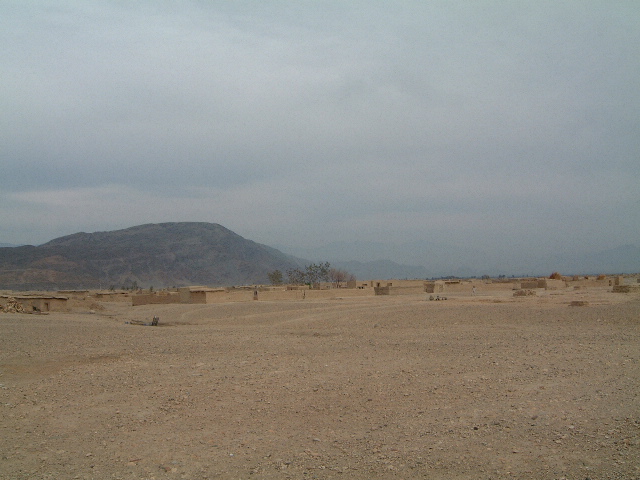 fall evening. The mountain range around Kabul is dry. Not a single tree, just some yellow bushes. ‘Amazing’, says the demining expert. I agree. While sitting on the stairs right at the apron, we have a 180 degree sight of the landing strip, taxi runways and hangers around the airport. With the dry yellow mountains, under the fading yellow sun, with small yellow dust devils whirling up small yellow tubes of sand and dust here and there, in between the wrecks of literally hundreds machines of war. Shot down, missed the runway, blown up, or just dumped and stripped of spare parts. MIL-8 Russian helicopter gunships with big dark ragged edged holes in their light yellow and green camouflaged side. Pieces of old artillery and tipped over radar equipment. Antonov and Ilhutsin cargo planes sticking their tail or wing in the air. Hangers with caved-in roofs, with crashed fuel and supply trucks underneath their vast concrete weight.
fall evening. The mountain range around Kabul is dry. Not a single tree, just some yellow bushes. ‘Amazing’, says the demining expert. I agree. While sitting on the stairs right at the apron, we have a 180 degree sight of the landing strip, taxi runways and hangers around the airport. With the dry yellow mountains, under the fading yellow sun, with small yellow dust devils whirling up small yellow tubes of sand and dust here and there, in between the wrecks of literally hundreds machines of war. Shot down, missed the runway, blown up, or just dumped and stripped of spare parts. MIL-8 Russian helicopter gunships with big dark ragged edged holes in their light yellow and green camouflaged side. Pieces of old artillery and tipped over radar equipment. Antonov and Ilhutsin cargo planes sticking their tail or wing in the air. Hangers with caved-in roofs, with crashed fuel and supply trucks underneath their vast concrete weight.
Three Boeing 727’s from Ariana, the official Afghan national airline, have their cockpit windows covered with a large cotton sheet, and their engines are closed off with red orange shutters. These are the last remains of the Afghanistan national fleet. They still fly within the country, but maintenance and spare parts becomes a pain. The sanctions do not allow the import of plane parts, nor do they allow international commercial flights. A few times per year, one international Ariana flight is allowed to transport children for treatment in Frankfurt, if I remember well. I met the German orthopedic surgeon who accompanies the children on these trips. Was it Frankfurt or Munich? A long flight, he said. And adventurous! But a good opportunity to have maintenance done on the plane while on the ground in Germany.
This is a magical moment. Italian opera music with a full mezzo-soprano voice plays in my head. ‘In Pace’ by Sarah Brightman. Try it, and then picture this scene from what will once have to be part of a movie: ‘In Pace’, ‘In Peace’ playing with nothing but the soft wind on the background, the camera makes a slow, very slow panoramic 180 dgrs pan. A gracious gesture of cinematographic perfection, starting at the left from the hangers and the few MIG fighters left intact, over the yellow specks of grass in between the runways, slowly over dumped or crashed Russian trucks, helicopters, planes sticking out of the low scrub bushes like a mechanical war grave yard, all covered with the yellow dust. The camera moves over the tarmac and in between the soprano voice, the microphone picks up the very remote and soft roar of the white Beechcraft UN aircraft approaching. The camera pans slowly over the old Ariana Boeing 727, with the edge of the cotton window cover sheet softly waving in the wind. The camera slowly slowly zooms out to show the emptiness of the apron, the voidness of the airport, the absolute acknowledgement of existence and persistence in this war torn airport, in this war torn capital city of this warn torn country, which is the center of a war torn region, terrorized by draught and the playing field of the big international powers-that-be.
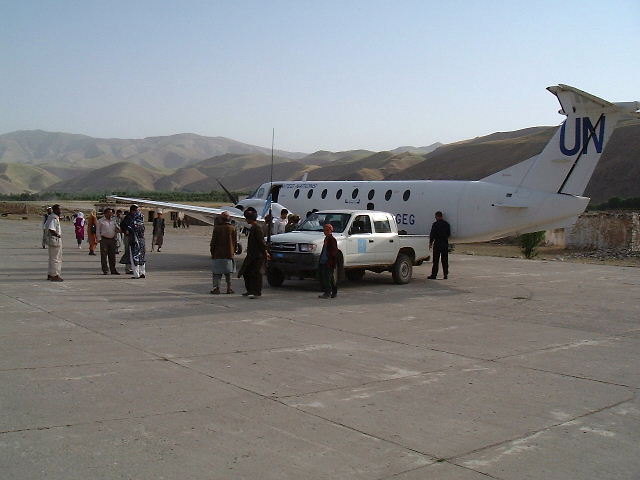 The camera zooms out, and from the left of the screen, one can hear a noise. Weet-..-weet. Very softly but sharply. Weet-..-weet. A repetitive metal squeak. Slowly. And as the camera continues to zoom out, a Taliban with his Khalashnikov over his shoulder, on an old Chinese bicycle rides into the left of the picture. Weet..-..weet. He has a bundle of hay on the back of his bicycle as he slowly cycles off the runway, over the apron, between the parked MIGs, the Ariana planes, and the taxi-ing UN plane. And at his own pace, the cyclist moves out of the picture, but the sound, you can still hear for a while. Weet-..-weet-..-weet. The plane neutrals the pitch of its propeller blades and shuts off the engine. (I always found that an appealing noise) ffffff-rrrrr-wwaaaaaaattt.. And before we know it, the plane has integrated into the yellow scenery, of a perfect afternoon in Kabul. The soprano voice fades out, and so does the picture. In Pace. In Peace…
The camera zooms out, and from the left of the screen, one can hear a noise. Weet-..-weet. Very softly but sharply. Weet-..-weet. A repetitive metal squeak. Slowly. And as the camera continues to zoom out, a Taliban with his Khalashnikov over his shoulder, on an old Chinese bicycle rides into the left of the picture. Weet..-..weet. He has a bundle of hay on the back of his bicycle as he slowly cycles off the runway, over the apron, between the parked MIGs, the Ariana planes, and the taxi-ing UN plane. And at his own pace, the cyclist moves out of the picture, but the sound, you can still hear for a while. Weet-..-weet-..-weet. The plane neutrals the pitch of its propeller blades and shuts off the engine. (I always found that an appealing noise) ffffff-rrrrr-wwaaaaaaattt.. And before we know it, the plane has integrated into the yellow scenery, of a perfect afternoon in Kabul. The soprano voice fades out, and so does the picture. In Pace. In Peace…
Exactly one week later, at almost exactly the same time of day in Kabul, the first plane crashed into the World Trade Center.
Top picture courtesy of Carl De Keyzer , Taliban picture courtesy of Hashmat Moslih
Continue reading The Road to the Horizon's Ebook, jump to
the Reader's Digest of The Road.
Read the full post...
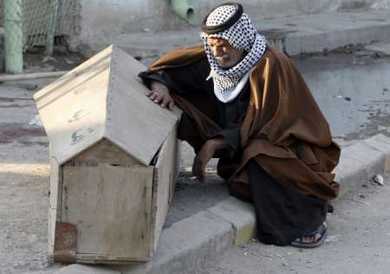 The global view of the United States’ role in world affairs has significantly deteriorated over the last year according to a BBC World Service poll of more than 26,000 people across 25 different countries.
The global view of the United States’ role in world affairs has significantly deteriorated over the last year according to a BBC World Service poll of more than 26,000 people across 25 different countries.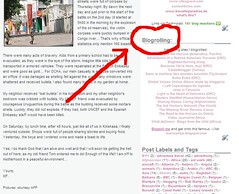
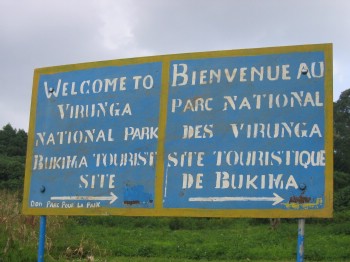
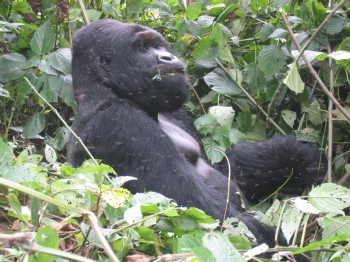
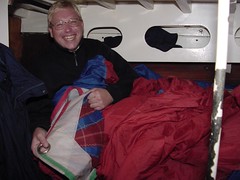
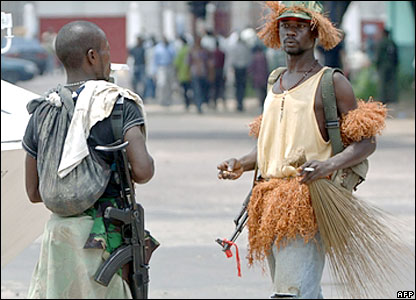

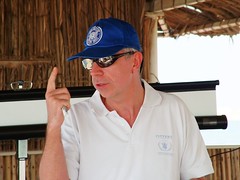
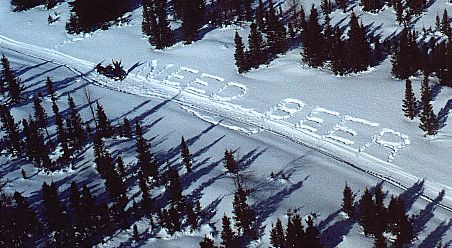
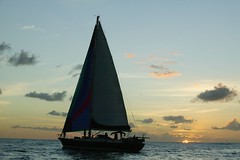
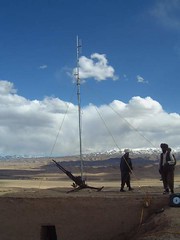




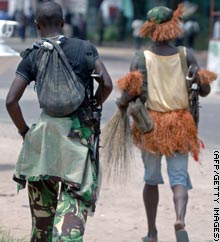



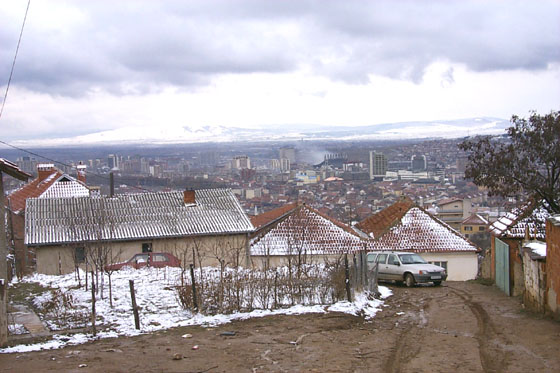 I did not know what to do with him. He certainly was a danger to himself touching our big generators. So I passed him onto Mick who tried to use him for some administrative work. Mick passed Herman over to Rosemary. Who passed him onto Frank. And Frank, our beloved Kiwi, got stuck with him. Once we heard Frank ask Herman over the radio: "Where are you? What is your location?". And Herman answered "I am on channel 3"... Frank still hates us for it. I am sure even up to today he still has nightmares about 'PW361'.
I did not know what to do with him. He certainly was a danger to himself touching our big generators. So I passed him onto Mick who tried to use him for some administrative work. Mick passed Herman over to Rosemary. Who passed him onto Frank. And Frank, our beloved Kiwi, got stuck with him. Once we heard Frank ask Herman over the radio: "Where are you? What is your location?". And Herman answered "I am on channel 3"... Frank still hates us for it. I am sure even up to today he still has nightmares about 'PW361'.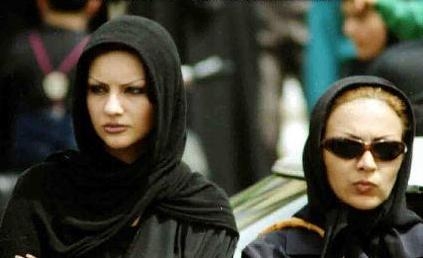
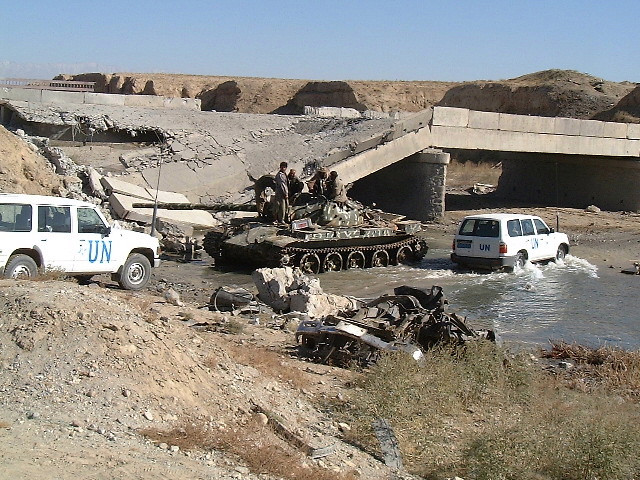
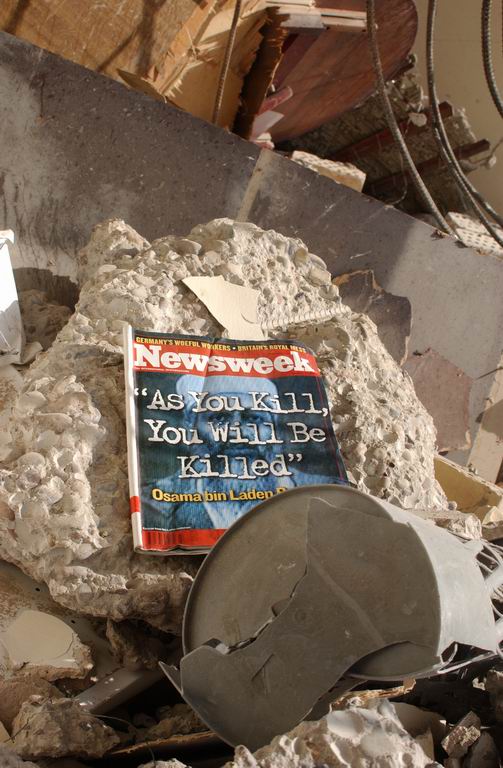
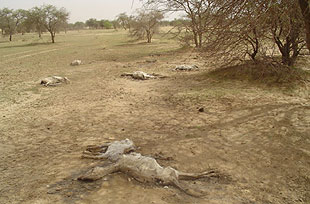
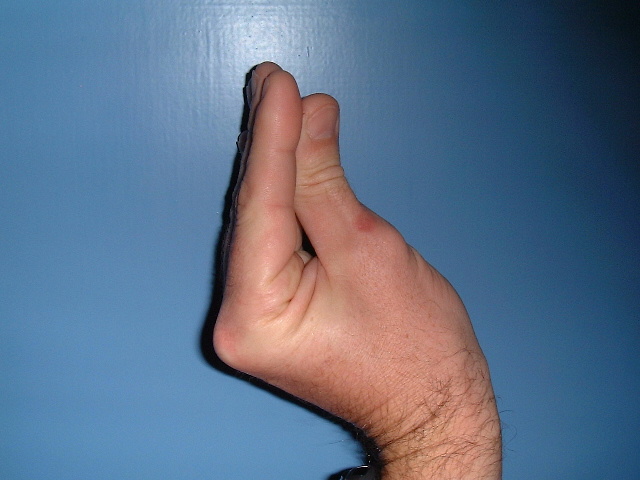


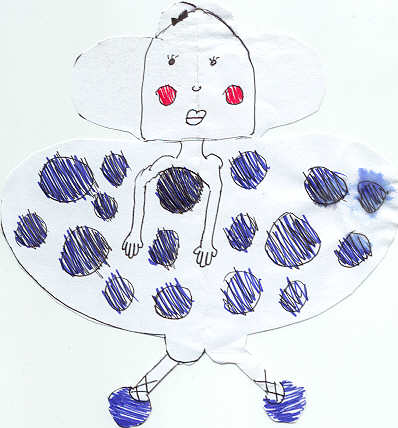

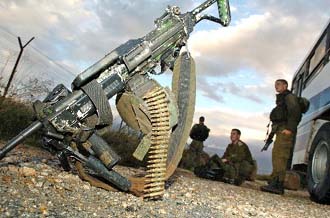 ‘The Jihadis’ is not their real name. I also censored the name of the country this all happened in. You never know…
‘The Jihadis’ is not their real name. I also censored the name of the country this all happened in. You never know…
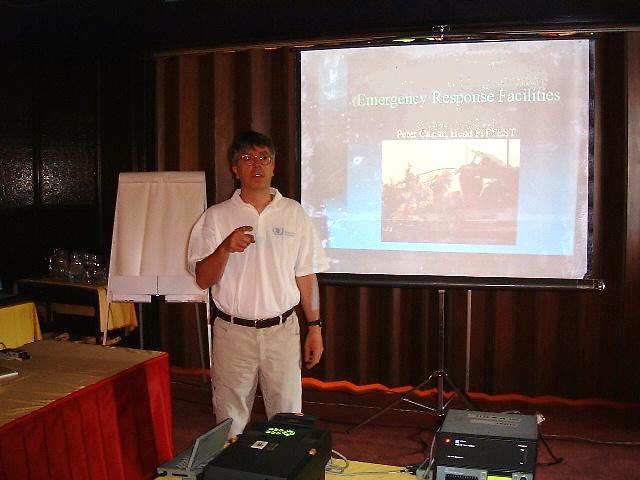 Soon enough our government delegation (the real one!) arrives, and we start. It was a bit difficult though as the curtains separating our meeting room from the one next door are not insulating the noise very well, to say the least. It is almost like I am standing in the midst of the heated discussion they have in the next room. I wonder what they are talking about… My audience understands exactly what was happening amongst our neighbours, but all through my presentation they never blink an eye.. Neither do I. But I keep on thinking how many of the people in the room next door would be on the ‘Top 10 Most Wanted’ list of any Western government.. I wonder if they would have liked my presentation?
Soon enough our government delegation (the real one!) arrives, and we start. It was a bit difficult though as the curtains separating our meeting room from the one next door are not insulating the noise very well, to say the least. It is almost like I am standing in the midst of the heated discussion they have in the next room. I wonder what they are talking about… My audience understands exactly what was happening amongst our neighbours, but all through my presentation they never blink an eye.. Neither do I. But I keep on thinking how many of the people in the room next door would be on the ‘Top 10 Most Wanted’ list of any Western government.. I wonder if they would have liked my presentation?
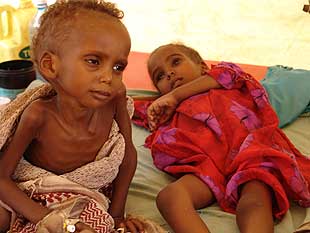
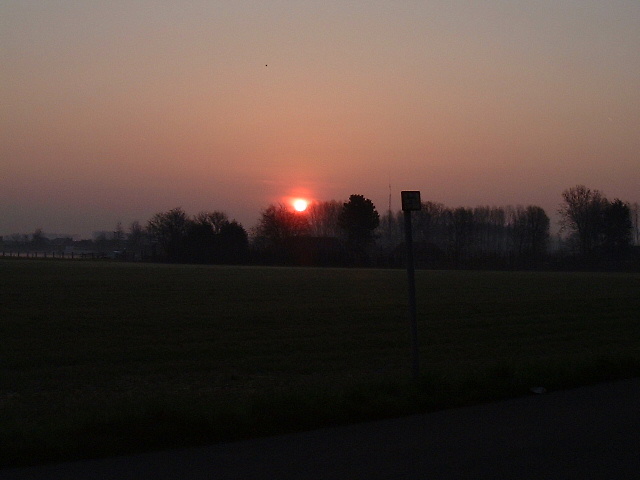

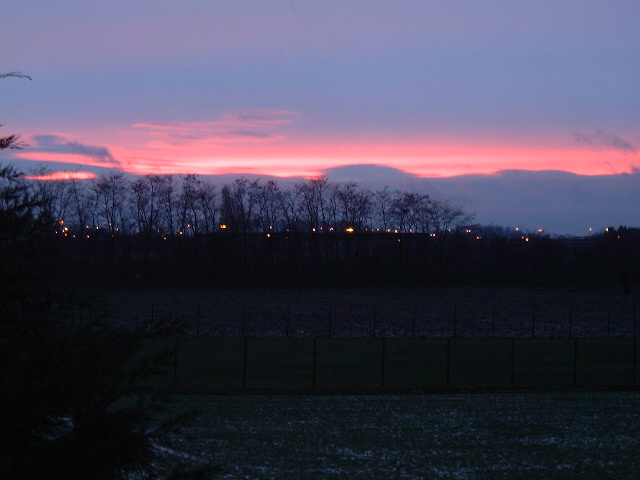
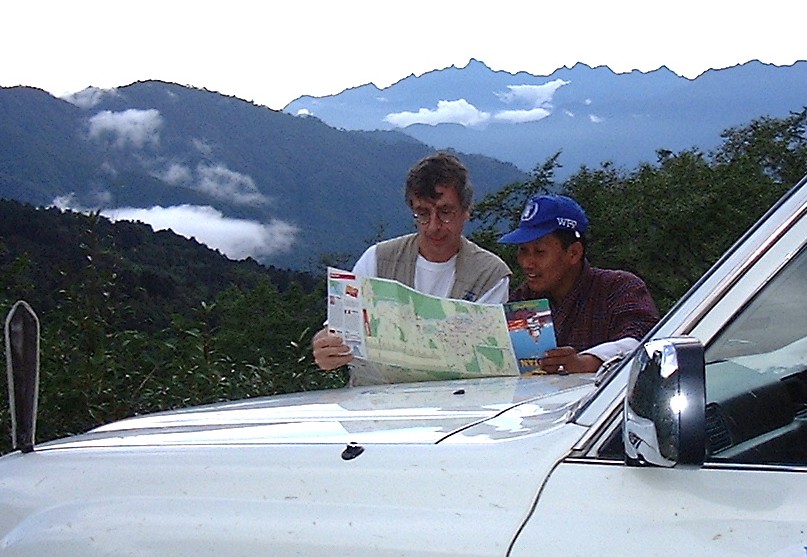

 Peter. Flemish, European, aid worker, expeditioner, sailor, traveller, husband, father, friend, nutcase. Not necessarily in that order.
Peter. Flemish, European, aid worker, expeditioner, sailor, traveller, husband, father, friend, nutcase. Not necessarily in that order.
The Road's Dashboard
Log in
New
Edit
Customize
Dashboard